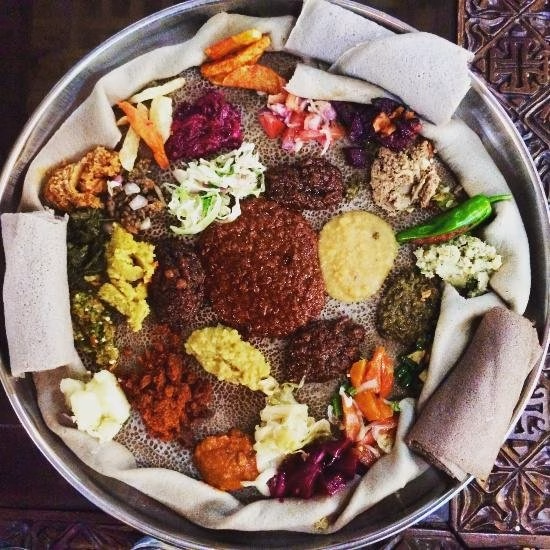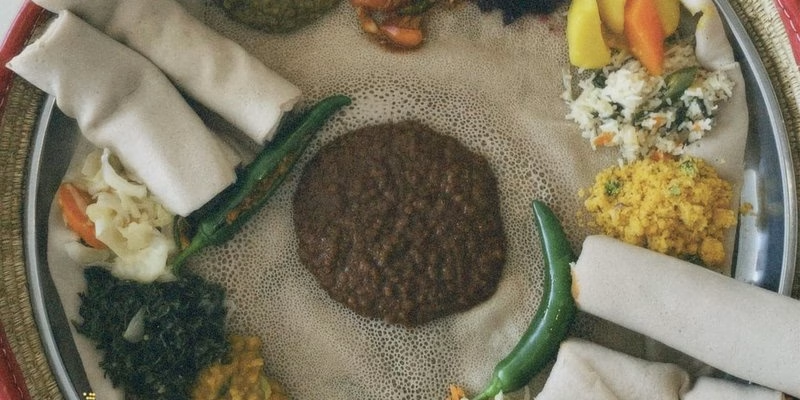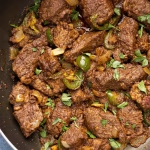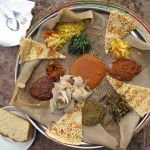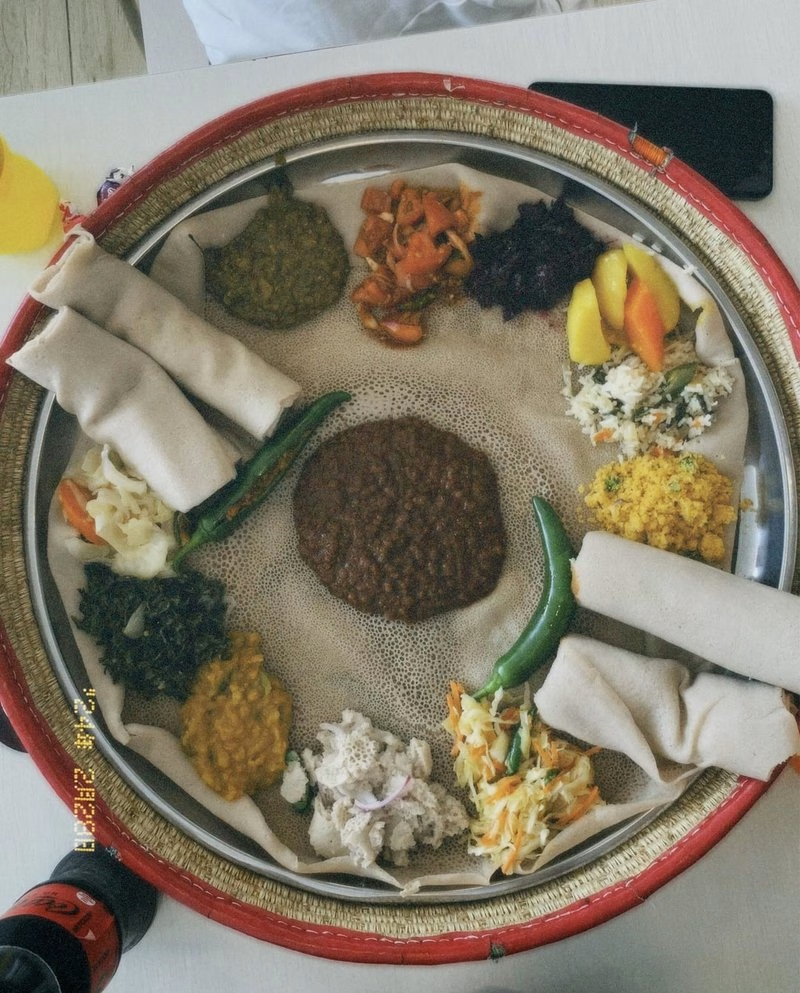
Beyaynetu (Vegetarian Platter) is not just a meal; it’s an experience that embodies the heart and soul of Ethiopian cuisine. Traditionally served on a large platter, Beyaynetu showcases a vibrant array of vegetables, legumes, and dips, all sharing a deliciously spiced base called berbere spice mix. This colorful dish has become a favorite among vegetarians and food lovers worldwide, thanks to its robust flavors and communal serving style that invites sharing.
Originating from Ethiopia, Beyaynetu reflects the country’s rich culinary culture, which emphasizes the use of fresh, local ingredients combined with aromatic spices. As you dive into this article, you’ll discover the essential Beyaynetu (Vegetarian Platter) ingredients, variations of the dish, and a step-by-step guide on how to make Beyaynetu (Vegetarian Platter) at home. Let’s embark on this flavorful journey together!
Ingredients
| Ingredient | Measurement | Description |
|---|---|---|
| Injera | 4 pieces | Teff flour-based sourdough flatbread, essential for serving and enjoying Beyaynetu. |
| Chickpeas | 1 cup | A hearty legume rich in protein, perfect for adding texture and nutrition to your platter. |
| Spinach | 2 cups | Fresh spinach lightly sautéed in garlic, offering a bright and healthy component to the dish. |
| Lentils | 1 cup | These red or green lentils are spiced and cooked until tender, making a delicious staple in Beyaynetu. |
| Carrots | 2 medium, diced | Sweet, diced carrots add color and a touch of sweetness to this Ethiopian favorite. |
| Berbere Spice | 2 tablespoons | This spicy Ethiopian blend is the key to achieving that authentic flavor in Beyaynetu. |
| Garlic | 4 cloves, minced | Fresh garlic enhances aroma and depth, elevating the flavors of the entire dish. |
| Olive Oil | 2 tablespoons | Used for sautéing vegetables, olive oil adds richness and helps meld the flavors together. |
| Salt | to taste | Essential for bringing out the flavors in all the ingredients. |
Step-by-Step Instructions
- Step 1: Prepare the Ingredients – Start by gathering all your fresh vegetables and legumes. Rinse the lentils and soak the chickpeas overnight for a better texture. Chop the carrots and spinach, and mince the garlic to prepare for cooking.
- Step 2: Cook the Lentils – In a pot, combine lentils with water and a pinch of salt. Bring to a boil and then simmer for about 15-20 minutes until tender. Once done, stir in 1 tablespoon of berbere spice for a flavorful kick.
- Step 3: Sauté the Vegetables – In a large skillet, heat olive oil over medium heat. Add minced garlic and sauté until fragrant. Then, add diced carrots and cook for 5 minutes. Finally, toss in the spinach and sauté until wilted.
- Step 4: Prepare the Chickpeas – In another pan, heat olive oil and lightly sauté the chickpeas, adding berbere spice and salt for seasoning. Cook until golden and slightly crispy.
- Step 5: Assemble & Serve – On a large platter, spread the injera flatbread as your base. Artfully arrange the cooked lentils, sautéed vegetables, and chickpeas on top. Serve with additional injera on the side for a delightful eating experience.
Pro Tips
- Experiment with Spices: Beyaynetu is versatile! Feel free to adjust the amount of berbere spice to suit your taste. Add more for extra heat or a milder spice for the kids.
- Use Fresh Ingredients: Fresh veggies not only enhance the flavor but also add nutritional benefits. Visit your local farmers market for the best selection!
- Serve it Family Style: The communal nature of Beyaynetu is what makes it special. Invite friends or family to join in on the fun of mixing and matching flavors!
- Check for Allergies: If serving guests, remember to check for any dietary restrictions. Chickpeas can be substituted if there are allergies or preferences.
- Make it Ahead: Most components of Beyaynetu can be prepared in advance. Just warm them up before serving for a quick meal on busy days.
Nutritional Information
| Nutrient | Amount per Serving |
|---|---|
| Calories | 350 |
| Protein | 15g |
| Carbohydrates | 60g |
| Saturated Fats | 2g |
| Fiber | 12g |
| Cholesterol | 0mg |
| Sugars | 6g |
| Fat | 7g |
FAQs
What is the best way to store Beyaynetu (Vegetarian Platter)?
Beyaynetu can be stored in an airtight container in the fridge for up to 3 days. It’s best to keep the injera separate until serving to maintain its texture.
Can Beyaynetu (Vegetarian Platter) be made vegan or gluten-free?
Yes! Beyaynetu is naturally vegetarian and can be made vegan by avoiding any dairy products in your sides. For gluten-free options, use gluten-free injera made from teff flour.
What are the best side dishes to serve with Beyaynetu (Vegetarian Platter)?
Traditional side dishes include spicy sauces like shiro (chickpea stew) or yemisir wot (spicy lentils). A fresh salad or avocado dip also pairs well.
How long does it take to prepare Beyaynetu (Vegetarian Platter)?
Preparation and cooking time is about 1 hour. Soaking chickpeas overnight significantly reduces prep time!
Can I freeze Beyaynetu (Vegetarian Platter) for later?
Yes, you can freeze the components separately. Just ensure everything is cooled before transferring to airtight containers. Reheat properly before serving.
Is what makes Beyaynetu (Vegetarian Platter) unique?
The communal aspect of Beyaynetu is what makes it fascinating! It’s not just a meal but an interactive experience that brings people together.
What kind of injera is best for Beyaynetu?
Teff injera is the traditional choice. It’s gluten-free and adds a slightly tangy flavor to the platter. You can also find mixed grain options if you’re looking for variety!
Can I make Beyaynetu (Vegetarian Platter) spicy?
Absolutely! Adjust the amount of berbere spice according to your heat preference. You can also serve extra spicy sauces on the side.
